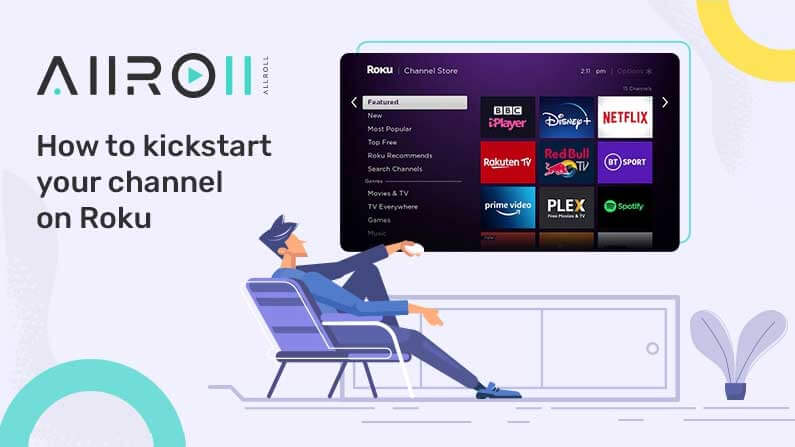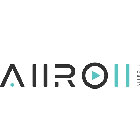Opinions expressed in this article are those of the sponsor. Search Engine Land neither confirms nor disputes any of the conclusions presented below.
How to kickstart your channel on Roku and stand out: A comprehensive guide
Read how to start your own Roku channel from scratch: the main methods, pitfalls and promotional techniques.

Roku is the world’s most popular connected-TV platform with almost 40 million active accounts. This number is expected to climb even higher, which will also boost the ad revenue Roku channel owners collect per annum. Statistical trends, effectiveness and the simplicity of doing business with Roku are the main drivers that attract content distributors to the platform — and advertisers follow.
Unfortunately, there’s no such thing as a free lunch. Creating a channel isn’t usually enough to get things up and running. Some channel owners tend to skip the hardest part — the promotion — and rely on organic growth or appearing in Roku’s highlights. However, this strategy is inherently ineffective. Of course, channels eventually gain an audience if they’re captivating and original content is regularly uploaded. But whether this rate of growth would satisfy business goals is a whole other discussion.
Promoting a channel is a complicated subject, with potential pitfalls and hazards, that requires attention to detail. Still, it’s not rocket science. In this article, we’ll explain what it takes to successfully run a Roku channel. To promote something, you need to create something first. So before we get to channel promotion, let’s first examine the two most common ways of establishing your own Roku channel.
Default solution: Direct Publisher from Roku
As any self-respecting CTV platform would, Roku has its own tools to develop apps from scratch. Firstly, they see it as their responsibility to provide content distributors with functionality to operate app development. And secondly, one of Roku’s main objectives is to make this process easier so they can attract quality content creators along with their audiences.
Direct Publisher is a standalone tool designed specifically for content creators. It is meant to facilitate channel configuration and publishing processes so that regular users with minimal expertise can set everything up on their own. However, it still requires some technical knowledge and developers’ assistance to get things going the right way. Before you can finally enjoy the benefits of a dedicated application, you’d have to deal with the following:
- Publishers have to upload their content to a third-party hosting service such as CDN (content delivery network) or OVP (online video platform). The files must comply with Roku’s requirements. For instance, videos must be in specific formats and be unencrypted, while also being unique or licensed to avoid copyright infringement.
- Uploaded content should be anchored to your channel’s feed. The feed collects all the data required to ensure the correct display on Roku. This includes catalog information like IDs, descriptions, titles, URLs to where the content is hosted, etc. The feed is configured in JSON or MRSS code, so this part requires basic programming skills, to say the least.
- Branding the new app is also the responsibility of the channel owner. You have to prepare all the necessary assets related to visuals in the right sizes and formats. This includes logos, splash screens, thumbnails, screenshots, and so on. You also must figure out how to set up the layout of your content, text and background color, highlights, and other UI details.
Resort to custom channel development
Just as it should be with complicated digital fields, there are professionals and dedicated companies that are happy to help with whatever troubles you might encounter for a fair price. This means that it’s possible to outsource all these responsibilities to professional Roku channel-makers.
Although it would require a lot of time to ensure the right layout and function, this method is a no-brainer for clients, but a more expensive one, compared with the Direct Publisher from Roku. A custom-made app is more likely to fit precise specifications if you have any. Plus, it allows developers to add extra features that are otherwise unavailable through Direct Publisher publication. If your aim is to grow big, you’d have to go with this method since the default tools are limited. Take a look at the Netflix or Spotify apps. Those wouldn’t be able to perform without custom engineering.
At the same time, full application development from scratch requires hiring an agency or developer. This, in turn, implies developer fees, as well as maintenance and hosting expenses. Custom development normally takes months to complete and there’s always a risk of underperformance from third-party contractors.
How to make your channel perform
As is widely acknowledged, making a good product is only 30% of what determines success, and perhaps 10% can be attributed to luck. The other 60% is how you sell it. Just like any other product on the market, Roku apps only perform when wisely promoted.
As mentioned above, it’s unrealistic to just create the channel and expect huge revenue from it right from the start. You either develop a marketing strategy on your own or assign outside professionals to do it. One way or another, the content has to be promoted, especially at the onset. Here are a few ways of doing that.
- Roku’s native ad platform. This is a tool for marketers that sets up ads and provides comprehensive stats regarding their performance. It works with different payment models like CPI, CPM, or CPC, enables ad scheduling and basic targeting. However, its functionality sometimes lacks flexibility, which motivates advertisers to seek other solutions.
- Allroll marketing platform. The Roku native ad platform is not the only opportunity for channel owners. Allroll is a fully-fledged alternative for advertisers and content publishers on Roku. It offers three basic ad formats: carousels (animated), banners (static), and non-skippable (video) in-stream ads. One of the major benefits Allroll ensures is 60% more app installs compared to the native advertising platform for the same price (up to 20 000 daily installs). Such a result is enhanced by ad reach that covers over 1.5 million viewers and smart remote app users. Through Allroll, channel owners can target viewers based on their location, interests, and viewing history. In addition, the company is working on launching a subproduct for next-gen campaign performance tracking.
- Guerilla marketing strategies. If you’re low on budget, there’s a bunch of artisanal methods to promote your Roku app. Most of them are completely free, however, they take a long time to perform. For instance, you can cooperate with other content makers to do “channel fusion”, which basically means exchanging videos and “add this channel” links between one another. Or, you can promote your content through social media (mainly Facebook, Twitter and Instagram) by posting channel updates, short teasers, and trailers. Developing a dedicated YouTube channel is also a good idea to promote your Roku content and it can help you establish significant traffic flow if done right.
General advice on managing a CTV/OTT app
- Behavioral researchers suggest that CTV viewers tend to use “second screens” (mainly smartphones and tablets) while watching their CTV content. This trend for multitasking pushed some Roku app developers to encourage viewers to interact with their “second screens” to enhance the viewing experience. This can, for instance, be used for interactive voting during talk show streams or as an advanced reality tool. One way or another, experimenting with users by adding extra content to their usual viewing routine through second screens is not going to harm anyone.
- How many times have you started watching a program on TV but, for one reason or another, wanted to finish it somewhere else? To provide users with more options to watch their content, consider launching your app on multiple CTV platforms. The ability to quickly switch between screens and environments will be much appreciated.
- If you distribute diverse content intended for different audiences through your app, it’s worth enabling account switching functionality for easy content assortment. This is especially useful for big families and those who need parental control to prevent children from watching sensitive content.
- Don’t forget that watching video content on TV, desktop, mobile or tablet screens are wholly different experiences. Applications that are primarily used on bigger screens a couple of meters away from a user are always going to feel different than watching a smartphone on a lap. This means you’d have to keep in mind differences in font perception, optimize image quality/loading speed ratio, and set control elements separately for each type of device.
To summarize, there is no longer a question of whether content creators should set up their individual Roku channels. The question is how to do it in the most efficient way. From our perspective, new or small channels should first trust the task to professionals from Allroll or consider using free promotional options before reaching the right traffic flow. At that point, it is the right time to partner with Roku to get the most out of their Self-Serve Promotions tool.
Channel owners must be proactive to achieve desirable performance. There’s a ton of promotional techniques, including free activities done through social networking, emailing or cross-promotion. But the most efficient way, undoubtedly, involves targeted advertising.
Related stories
